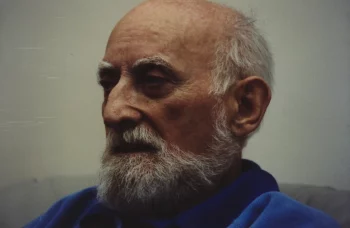Nearly a year into lockdown, Edvard Munch’s The Scream is a painting that has become more and more relatable. However, on the original version of the painting, there is a an eerie sentence written in pencil that has been more or less ignored until now. Ahead of the opening of the new National Museum of Norway, researchers examined the sentence and have determined that Munch indeed wrote the short inscription.
Four versions of the painting exist depicting a lonely figure cupping its face in what could be read as anguish. Swathes of colour sweep and pool around the figure offering Munch’s interpretation of a seascape with a looming red sunset. According to the artist, the painting was inspired by a blood-red sunset he once observed that felt like an “infinite scream passing through nature.”
The Scream has become synonymous with anguish and disbelief and was even transformed into an emoji. But, it’s the top left corner of the original 1893 version that’s creating a lot of buzz. There, a sentence scribbled in pencil reads “Can only have been painted by a madman.”
The inscription was first clocked by a Danish critic in 1904 who observed the writing on the surface of the painting. Since its discovery, it has been unclear if the graffiti was by the hand of Munch or a cruel review left by a spectator. The National Museum of Norway, though, has settled that debate, announcing that the sentence was written by Munch around 1895.
Using infrared scanning, researchers were able to analyse the writing and compare it with notes and letters written by Munch during his life. That analysis, coupled with one particular event in Munch’s life, led researchers to believe that the words were definitely written by the artist.
In 1895, Munch exhibited The Scream for the first time in his hometown of Kristiania (now Oslo) where it was met with fierce criticism. The painting also sparked speculation over the artist’s mental state, which led to the incident thought to be behind inscription. At a discussion night held at the Students Association, a medical student remarked that the painting proved that Munch was not of sound mind. It is believed that Munch was present at the discussion, heard the remark, and soon after wrote the sentence on the painting. The 1895 incident would also become a recurring theme in his letters.
“It’s a combination of being ironic, but also showing his vulnerability,” Mai Britt Guleng, curator of the museum and a Munch expert, told The Guardian. “He is actually taking this very seriously and he is hurt because there is a history of illness in his family, and he was very anxious, but he showed himself be marked by it.”
His life was punctuated by illness and death. Munch’s father and sister suffered from depression and were eventually diagnosed with schizophrenia. He watched his sister pass from tuberculosis as a child and later his mother also died of the illness, contributing to his obsession with disease.
In 1908, Munch was hospitalised following a nervous breakdown exacerbated by alcoholism.
The 1893 version of The Scream will go on view at the new National Museum of Norway expected to open in Oslo in 2022.







